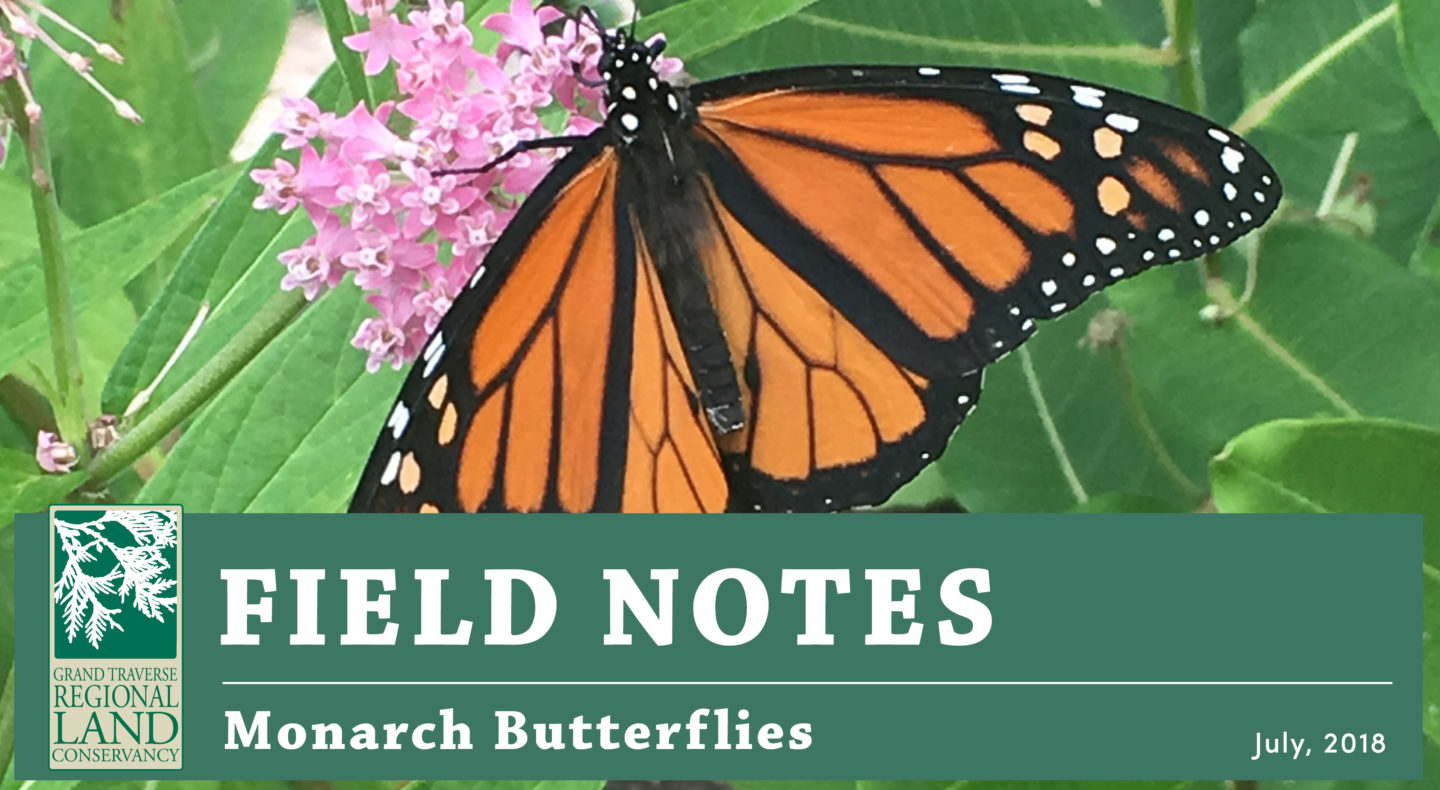Monarch Butterflies
July 15, 2018A special treat during the warm days of summer is the sight of stately Monarchs flying above open meadows. Look closer and you can see monarch caterpillars munching on the leaves of many Milkweed plants. This symbiotic relationship, in which the Monarch helps pollinate the plant and the plant provides a food source for the caterpillars, means that Milkweed plants are critical for this butterfly species’ survival. Once the eggs hatch on the milkweed, the caterpillar emerges and consumes the leaves, incorporating plant toxins that contribute to its bright coloration used to scare off predators.
There are 11 native Milkweed species in Michigan, some of which are very rare and only seen in the southern habitats of Michigan. In our area the most commonly seen include Common Milkweed, Swamp Milkweed and Butterfly Weed. These “weeds” are native plants and are found on many GTRLC protected lands. While most of our butterfly species hibernate in the cooler months, or sometimes make migrations to southern habitats, the later season monarchs or “super generation” monarchs live 8-9 months.
These monarchs make the almost 2,000 mile journey south to central Mexico, where most Michigan Monarchs tend to congregate in the Sierra Madre mountain region.
Monarchs are unfortunately declining for a number of reasons, including habitat loss and decline of Milkweed populations. For more information on how you can help, visit: https://www.fws.gov/savethemonarch/
Categorised in: Field Notes
